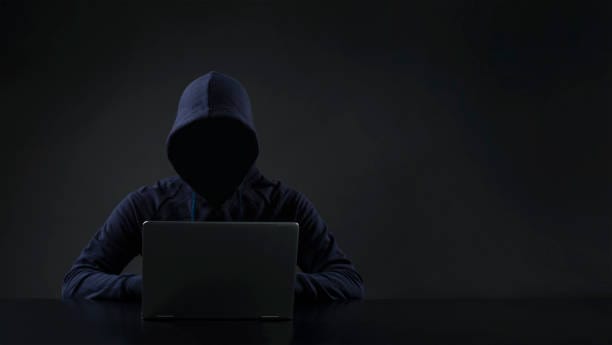In the world of data transmission, every second counts. Terabytes of data are transmitted globally, flowing as light signals through fiber-optic cables. These cables, the lifeblood of the information age, carry vast amounts of data at speeds unparalleled by traditional electrical signals. However, as data floods these networks at an ever-increasing rate, the need for efficient switching technology has become more critical than ever. The switch in the fiber-optic network functions like a traffic light system, ensuring data flows smoothly and efficiently from one destination to another.
Until recently, the technology used to control this data flow, known as photonic switches, faced a significant challenge: a tradeoff between speed, size, and power consumption. Larger switches can handle higher data rates and offer greater capacity, but they come with increased energy demands, larger physical size, and higher costs. Smaller switches might be more energy-efficient, but they sacrifice speed and data handling capabilities. This tradeoff has stymied progress for years. However, a breakthrough presented by researchers at the University of Pennsylvania School of Engineering and Applied Science (Penn Engineering) in a recent paper published in Nature Photonics offers a promising solution by overcoming this dilemma.
The innovative switch designed by the Penn Engineering team is a mere 85 by 85 micrometers in size, smaller than a grain of salt, yet it achieves unprecedented levels of speed and energy efficiency. This accomplishment is the result of a novel method that harnesses light manipulation at the nanoscale. By utilizing the principles of quantum mechanics, specifically non-Hermitian physics, this switch can route optical signals at speeds far surpassing those of traditional switches—speeding up the process of data transmission across the world.
Liang Feng, Professor of Materials Science and Engineering (MSE) and Electrical and Systems Engineering (ESE) at Penn, and the senior author of the paper, points to the potential of this new technology to revolutionize not only everyday tasks like streaming movies but also more complex processes, such as training artificial intelligence (AI). With the volume of data required for these operations continuously growing, having a fast, efficient, and scalable system to manage that data is paramount. This new photonic switch achieves just that, opening doors for improvements in computing, communication, and AI.
Non-Hermitian physics—the foundation of the new switch—plays a key role in providing this enhanced control over light signals. At its core, non-Hermitian physics involves understanding how certain systems, when operating under specific conditions, can exhibit unique, often counterintuitive behaviors. Xilin Feng, a doctoral student in ESE and the paper’s first author, explains how these phenomena allow the researchers to finely tune the behavior of light on their chip. By carefully adjusting the “gain” and “loss” properties of the materials involved, the team can direct light along the desired path with remarkable precision. This precise control is what enables the switch to rapidly divert signals in just trillionths of a second while consuming minimal power, a feat previously deemed unattainable.
Prior switches were limited in that they could either operate quickly or occupy a small footprint, but not both at the same time. This new device breaks through that barrier by providing both speed and compactness, offering what amounts to a billion-fold increase in speed compared to the blink of an eye. This remarkable speed makes the new switch a game-changer for a range of applications—from networking in data centers to real-time processing of high-demand AI and streaming services.
A particularly promising aspect of the switch is its use of silicon—a material that is inexpensive, widely used, and compatible with existing semiconductor manufacturing infrastructure. Silicon is at the heart of most modern technology, from computers to smartphones, and the use of this material makes the new switch an ideal candidate for mass production. According to Shuang Wu, a doctoral student in MSE and co-author of the paper, this integration of non-Hermitian physics with silicon photonics opens the door for wider industry adoption. Silicon photonic foundries, which are responsible for producing chips for everything from graphics processing units (GPUs) to advanced computer processors, will be able to easily incorporate this new switching technology into their manufacturing processes.
Beyond the silicon, the switch design involves another critical component: a semiconductor layer made from Indium Gallium Arsenide Phosphide (InGaAsP), a material highly effective at manipulating infrared light. This is the same wavelength of light used in undersea optical fiber networks that carry the bulk of global internet traffic. This careful pairing of materials is essential for maintaining high-speed data transmission while ensuring efficient energy use. However, joining these materials together presented a series of challenges. The fabrication process was demanding, requiring the layers to be aligned to nanometer-scale precision to avoid introducing errors that could make the device ineffective.
As Xilin Feng describes, building the prototype was akin to creating an intricate sandwich, but the challenge lay in ensuring the “layers” of materials were aligned with pinpoint accuracy. Any small misalignment would lead to failure, making it a high-risk endeavor to develop a working model. However, through persistence and numerous trials, the researchers were able to successfully demonstrate the functioning switch, which paves the way for further exploration and refinement in the field of quantum photonics.
The research paper’s authors also believe the switch could have broader implications for the data center industry. As the backbone of modern digital services, data centers handle enormous amounts of data 24/7. The speed and efficiency of optical switches have a direct impact on the efficiency of data storage, retrieval, and processing. With the new switch operating with minimal power consumption and faster response times, it could dramatically improve the performance and energy efficiency of data centers, which are some of the largest consumers of electricity globally. Liang Feng notes that their system operates with a speed limit of just 100 picoseconds, offering performance levels much faster than existing switches. This improvement could directly lead to more efficient data processing and communication within large-scale computing systems.
Reference: Xilin Feng et al, Non-Hermitian hybrid silicon photonic switching, Nature Photonics (2025). DOI: 10.1038/s41566-024-01579-9






